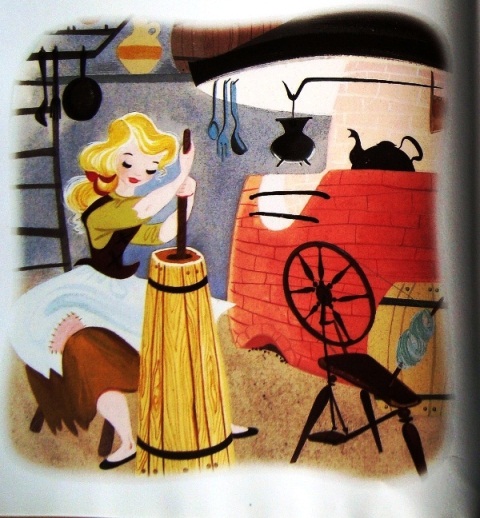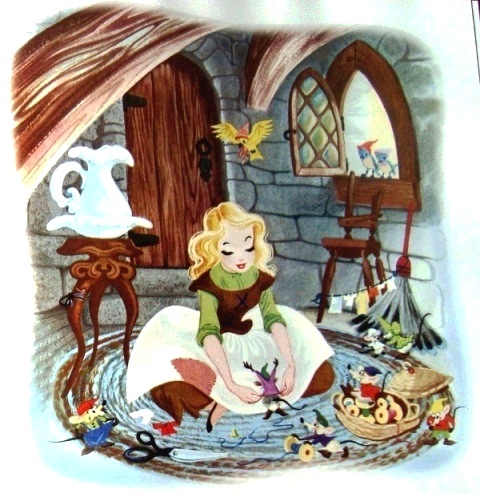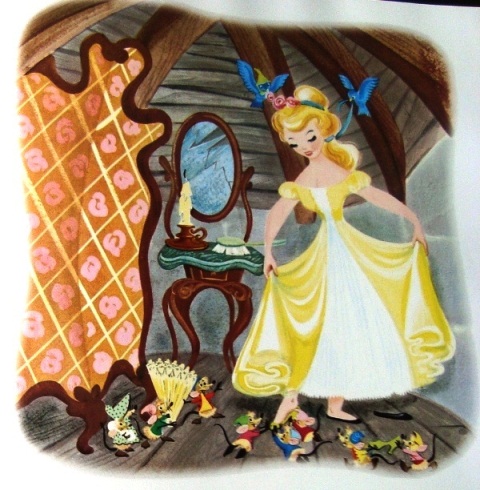JOYFUL MIND WELLBEING
|
I love coming across long-forgotten children’s books and thrilling at the pictures that once sparked an impressionable imagination. The Golden Book Cinderella is one such gem; my sisters Mary, Margie and I drooled over the doe-eyed heroine in her whimsical settings many years ago. Cinders in her yellow party dress with the bluebirds tying ribbons in her hair; Cinders seated comfortably on the floor in peasant attire, fitting hand-sewn outfits on obliging mice; Cinders churning butter, a black kettle on the hob in the background.
Today I live in a somewhat rustic bush residence with a stone fireplace that reminds me of Cinderella, particularly when I’m stirring the black cast-iron pot on the fuel stove. But rest assured, the similarity stops there! We’re enlarging our little bush house at the moment with a long-awaited new room. Which brings me to this blog topic. I’m noticing that we’re needing lots of makeshift blocks along the way to use as wedges in the building process. For example, small blocks of wood prop up the fibro sheets we paint; other blocks keep materials raised dry above wet ground; blocks choc window sashes; a plank serves as a temporary entrance ramp. The makeshift blocks aren’t part of the finished structure but they assist the build. They assist by creating space, necessary space, between one surface and another. (How I wish Cinderella was on the job to keep the kitchen running while we toil away on the building site, that would assist the build, too!) Space. Ahhh. Even the word is consoling in a cluttered world, and very appealing to a cluttered mind. What if we could use makeshift blocks to create space in our own crowded head? Let in the sunlight and a refreshing breeze? Well fortunately, we can. That’s where mindfulness and its tools come in. One such makeshift block, in the mindfulness context, is to use a special phrase that creates a space between an automatic thought and our uptake of that thought (think sunlight and refreshing breeze.) “Thank you Mind” is one such device and is recommended by psychologist Russ Harris: his best-selling book, The Happiness Trap, is an informative read. Although the word ‘thank you’ is usually a response to something positive, here it’s a way of addressing troublesome thoughts. We greet our circular thoughts with warmth and humour, and of course need to have our mindfulness in place in order to even notice them. “Thank you Mind” is like saying ‘I see you, troublesome thought’. We could equally as well say ‘hello mind’ or ‘that’s nice, dear’. Anything that works. The idea is to greet the presence of unhelpful thoughts, particularly the recurring, emotionally-charged type, with a brief verbal response. It’s like a nod or acknowledgment, a recognition that we know what’s going on in our mindstream, thank you very much, and we are in charge here. We are not going to be dictated to by repetitive thinking, product of the ruts formed by well-worn neural pathways in our brain. No, we will get to the Ball, and the Ball is our own glorious life of choice and open-hearted presence. Cinderella could have made good use of the “Thank you Mind” wedge. I bet she often felt hard done by, with the stepsisters taking over the accounts and she being relegated to the rags and the pots. In Cinderella’s case, she may have been tormented by the recurring mantra “Darn these snooty step-chicks, I’m outta here. Hey no, I’m totally stuck, povo, useless. Things will never improve. I’m a confirmed loser. Woe is me.” Stop a moment, Cinderella. Try “Thank you Mind” each time you notice the familiar inner rant (and you won’t notice every single time, but that’s okay). What happens? Do you get a whiff of fresh air, a sense of space, of fresh possibility? By inserting the phrase each time the familiar negative emotion surfaces, Cinderella will start to see how her own repetitive self-talk and reactivity generate her claustrophobia and prevents her making helpful choices. Of course, in the fairytale a handsome prince comes along and saves the day, but we’re not falling for that one, are we ladies? Harris points out that “Thank you Mind” is not about being judging or patronising towards our repetitive thoughts. Its role is simply to put a handy wedge between oneself and our thinking process. It’s a reminder that we are not our thoughts and we do not have to accept, chew and digest whatever the mind serves up. When we become more conscious, or mindful, of our thought processes and thinking habits we also become more free. It’s sobering to reflect that the thoughts we do not see are the ones that control us. In my own case, Thank you Mind can help me cope with the stress of building. Say we’ve put up the stud walls and are now ready to start on the roof. I spy a single grey cloud overhead and catastrophise: “Oh no, it’s going to storm, possibly for weeks and we’ll never get the roof up!” Thank you Mind. Then, ‘Oh no, he’s neglected to put the ant caps on the posts, we’ll be overrun by white ants for sure!’ Thank you Mind. “I haven’t got time for building anyway, I’ve got far too much else to do, there’s x, there’s y, there’s z (grumble, grumble, grumble): Thank you Mind. “Oh why didn’t he put ant caps on the posts, we’ll be overrun by white ants for sure!” Repetitive recurring thought: Thank you Mind! “Thank you Mind” pulls me out of rumination and its ghostly terrain; it gives me back the present and widens my perspective. (Cinderella, I wish you knew.) Trying circumstances will always come our way but we don’t have to jump aboard the gravy train of ‘poor me’, ‘bad them’, and fall prey to excessive semi-conscious rumination. With the makeshift block of “Thank you Mind” in our Mindfulness toolkit we can make the effort to break free and reconnect to the vibrancy of everyday life. We can harbour a joyful mind, even amidst our difficulties. Try it for yourself. Thank you, Thank you Mind. © Shakti Burke 2013 UPCOMING MINDFULNESS COURSE We’ll be playing with Thank you Mind and other similar devices through fun activities in my upcoming six-session Mindfulness course in Kyogle. Plus the usual tips on how to achieve inner focus and develop mindful awareness in daily life, alongside the more formal elements of guided relaxation and meditation. Course starts 21st October for six Monday evenings, 5.30-7.15 pm at the Seniors Centre venue in Blore St, behind the pool. Bookings, [email protected]
5 Comments
|
Categories
All
Categories
All
|
ServicesYoga Online
Mindfulness Coaching |
|



 RSS Feed
RSS Feed